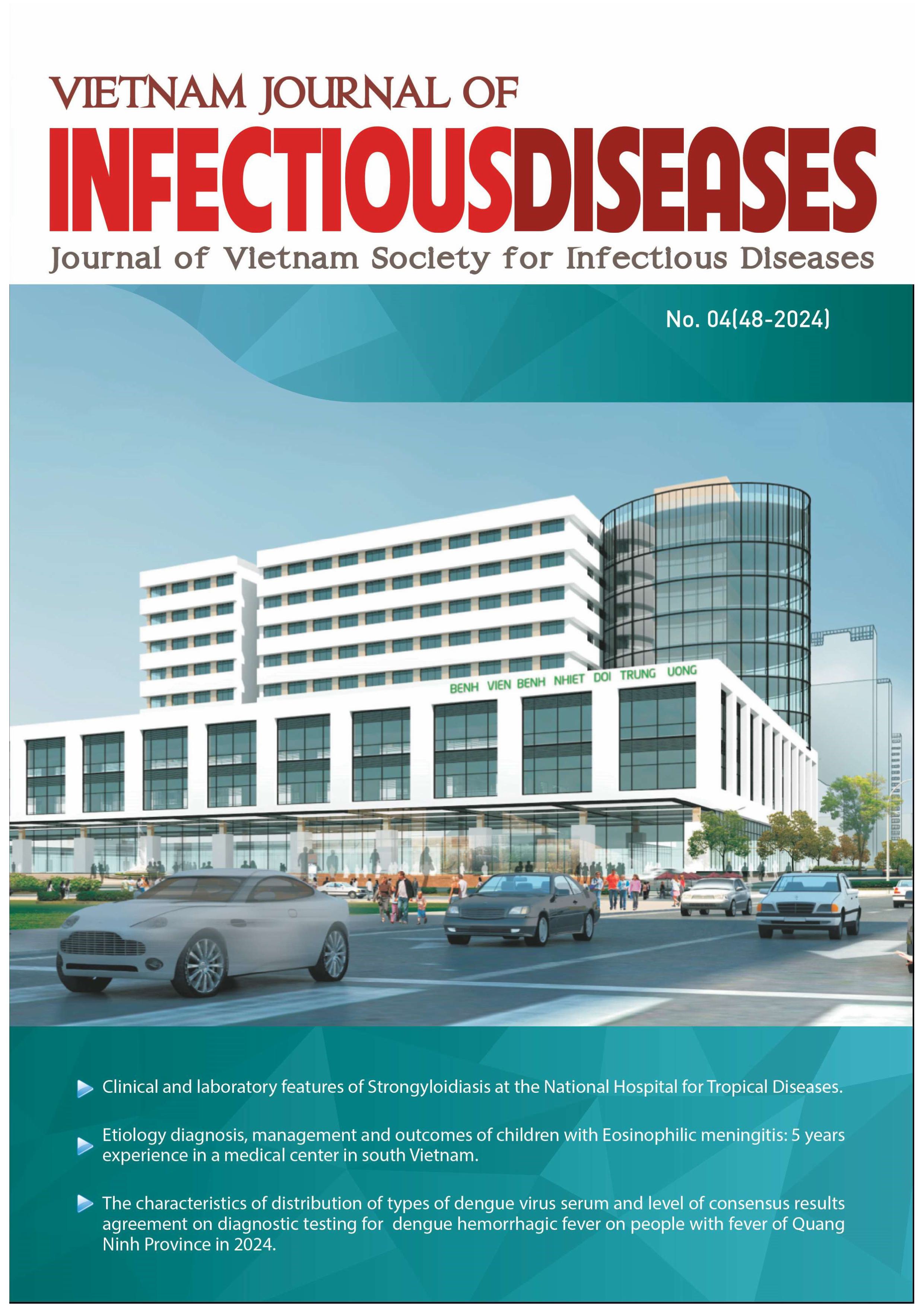ETIOLOGY DIAGNOSIS, MANAGEMENT AND TREATMENT OUTCOMES OF CHILDREN WITH EOSINOPHILIC MENINGITIS: 5 YEARS EXPERIENCE IN A MEDICAL CENTER IN SOUTH VIETNAM
Nội dung chính của bài viết
Tóm tắt
Background: Eosinophilic meningitis (EOM), which is related to parasitic infections in medical literature, can also lead to permanent neurological disability among survivors. Data about the etiology of EOM in Vietnam, as a tropical country, especially on children is still limited. In addition, these patients’ management and treatment outcomes are poorly understood.
Objectives: This study was designed to investigate the etiology of common causes, management, and outcomes in children with EOM in Children’s Hospital 2, Vietnam.
Subjects and methods: A retrospective case series was conducted at the Infectious Diseases Department of
Children's Hospital 2, involving children diagnosed with EOM between March 2018 and March 2023.
Results: A total of 53 patients (2.1% among the cases of meningitis) meeting the diagnostic criteria
were enrolled in the study. Using cerebrospinal fluid (CSF) PCR assay, 7 out of 53 (13.2%) identified the causative agents. These included 4/7 (57.1%) parasites and 3/7 (42.9%) M. tuberculosis. The treatment rate with corticosteroids was 66.04%, while the rate with albendazole was 60.37%. Post-discharge neurological
disability was observed in 11.3% of the cases.
Conclusions: EOM is a rare condition, comprising 2.1% of all cases of meningitis in Children's Hospital 2. The causative agents mainly consist of parasites, with special emphasis on Mycobacterium tuberculosis. The mortality rate is low, yet the prevalence of long-term complications remains significant.
Chi tiết bài viết
Từ khóa
Eosinophilic meningitis, children, parasite, corticosteroid
Tài liệu tham khảo
2. Kao-Pin Hwang, Eng-Rin Chen. Clinical Studies on Angiostrongyliasis cantonensis among Children in Taiwan. Southeast Asian J Trop Med
Public Health, 1991;22: 194-199.
3. Sawanyawisuth K., Chotmongkol V..Eosinophilic meningitis. In: H.H. Garcia, H.B. Tanowitz, and O.H. Del Brutto. Handbook of Clinical Neurology, 2013, Vol. 114, 3rd, pp.207-215. Elsevier.
4. Ozateş M, Kemaloglu S, Gürkan F, et al. CT of the brain in tuberculous meningitis. A review of 289 patients. Acta Radiol. 2000;41(1):13-7. doi:
10.1034/j.1600-0455.2000.041001013.x.
5. Jitpimolmard S, Sawanyawisuth K, Morakote N, et al. Albendazole therapy for eosinophilic meningitis caused by Angiostrongylus
cantonensis. Parasitol Res. 2007;100: 1293-1296.doi: 10.1007/s00436-006-0405-7.
6. Park S, Jung J, Chong YP, et al. Infectious Causes of Eosinophilic Meningitis in Korean Patients: A Single-Institution Retrospective
Chart Review from 2004 to 2018. Korean J Parasitol. 2021;59(3): 227-233. doi: 10.3347/kjp.2021.59.3.227.
7. Thanaviratananich S, Thanaviratananich S, Ngamjarus C. Corticosteroids for parasitic eosinophilic meningitis. Cochrane Database
Syst Rev. 2015;2015(2): CD009088. doi:10.1002/14651858.CD009088.pub3.
8. Jill Weatherhead, Rojelio Mejia. Eosinophilic Meningitis. In: James D. Cherry, Gail J.Harrison, William J. Steinbach, et al. Feigin
and Cherry’s Textbook of Pediatrics Infectious Diseases, 2019, V1, 8th, pp.349-355. Elsevier, Philadelphia.


